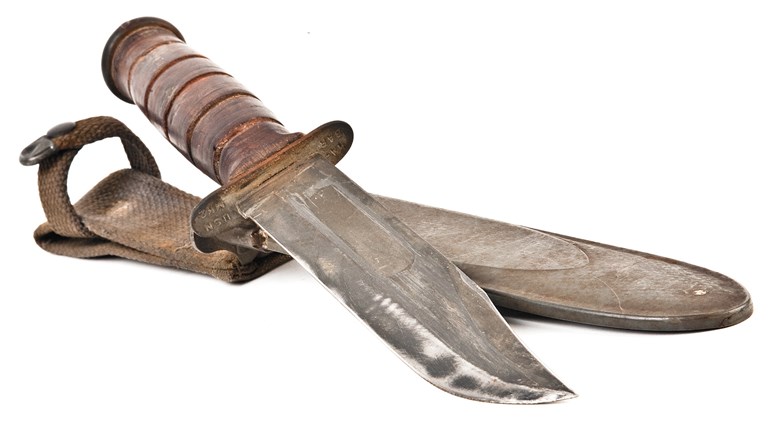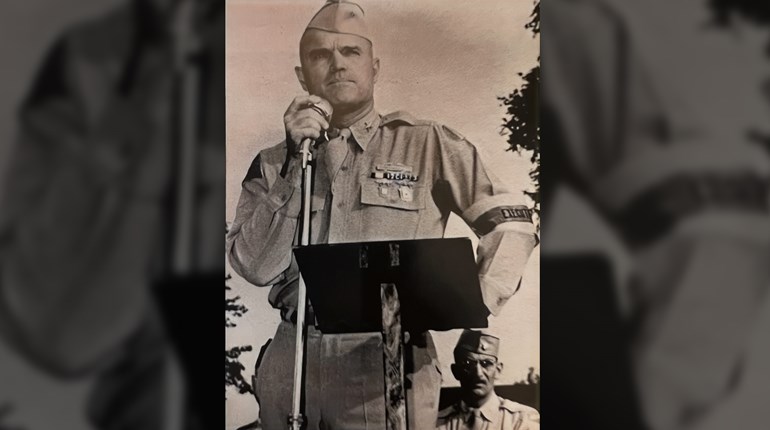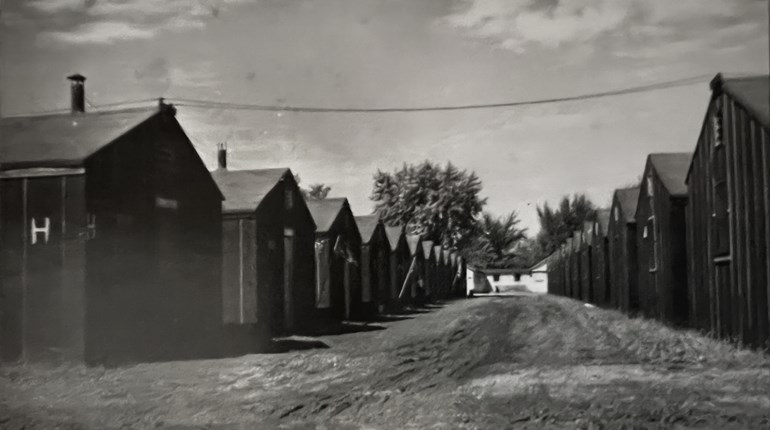
As pages roll off the calendar, we posit that only June 6 and Sept. 11 rival Dec. 7 in the minds of most Americans for martial significance.

The former, of course, is D-Day, the World War II Allies’ 1944 assault on Hitler’s “Fortress Europe,” and very much the beginning of the end for the Third Reich. Adolf Hitler would be dead by his own hand less than 11 months later, and the war in Europe ended with Allied victory in May 1945. Even by modern standards, it dwarfs any other single-day action in human history.
Sept. 11, 2001, requires even less reprise: Four hijacked U.S. airliners crashed into the Pentagon, both towers of the World Trade Center in Manhattan, and a Shanksville, Pa., field (when passengers and crew tried to retake United 93, diverting it from an unknown east-coast target). Nearly 2,800 people lost their lives, “Al Qaeda” was suddenly known to everyone, and the “Global War of Terror” (GWOT) began.
Pearl Harbor shares many (principally ugly) aspects of both days. The material toll on the soon-to-be-desperately-needed Pacific Fleet was dreadful: All eight moored battleships were damaged, with four sunk (two later recovered) and three more badly damaged. Two other vessels were sunk outright, and nine additional (three each of cruisers, destroyers and support ships) were seriously damaged. Nearly 90 percent of the military aircraft were also lost: 188 completely destroyed, and 159 more put out of action.
More dreadful still was the human cost: 2,403 killed and 1,178 wounded. More than 1,100 died on the battleship USS Arizona alone.
The surprise attack launched the United States immediately into World War II—President Franklin Roosevelt’s “date which will live in infamy.” Japan’s military leaders hoped that a sufficiently devastating strike would cause the U.S. to cede the Pacific Basin in practical terms, and restore crucial access to resources for Japan’s continuing conquest of the Far East (war with China began in 1937, for instance). Despite the huge numerical success of the raid, it nevertheless missed a crucial target: U.S. aircraft carriers. Luckily, none of the three fleet carriers—sister ships Lexington and Saratoga, and Enterprise—were in the harbor when the attack came. While Lexington would go the bottom of the Coral Sea in early May of 1942, both Saratoga and Enterprise would see out the war. Earning the nickname “The Grey Ghost,” Enterprise would earn 20 battle stars, becoming the most decorated ship in either theater of the war.
This crucial good fortune aside, Pearl Harbor was nevertheless a stinging defeat. It also highlighted in many ways U.S. material and philosophical unpreparedness for the serious designs of all the Axis powers at the start of World War II.
It was also a day of tremendous heroism. While many know the story of the loss of the USS Arizona—four bomb hits and a devastating forward magazine explosion less than 20 minutes into the attack—no fewer than 15 Medals of Honor were awarded for actions on Oahu that day.
Three went to officers aboard the Arizona. Rear Admiral Isaac Kidd, Commander of Battleship Division One, boarded his flagship as soon as bombs began to fall. Along with Captain Franklin Van Valkenburgh, they directed the doomed ship’s defenses as aircraft from the Japanese carriers Kaga, and then Hiryu, dropped modified armor-piercing 16-inch naval rifle shells. At least one resulted in the magazine detonation that sank the Arizona in minutes. Divers later found a ring known to belong to the Admiral fused to a bridge bulkhead. Command fell to Damage Control Officer Lt. Commander Samuel Fuqua, who would actually survive to receive his medal: He coolly saw to the final evacuation of the Arizona (damage was so severe her hulk would burn for several days), leaving the stricken vessel last. Still leaking fuel oil 74 years hence, the wreck is now the principle memorial to the attack.
Fuqua survived the war and retired as a Rear Admiral. A destroyer would be named for Van Valkenburgh (DD-656), and three ships (as well a class of destroyers) later named for Kidd (DD-661, DD-993 and DDG-100).No fewer than 15 Medals of Honor were awarded for actions on Oahu that day.
Moored alongside the USS Arizona was the USS Vestal, a repair ship under the command of Cassin Young, Commander, USN. Young was literally blown overboard by the eruption of the Arizona’s magazine, but swam back to his stricken command (hit by two aerial bombs intended for Arizona). He was able to maneuver the seriously damaged Vestal away from Battleship Row by engine manipulation alone, eventually beaching her to prevent sinking. Her ship-fitting crew would later prove instrumental in cutting into the USS Oklahoma to rescue survivors trapped below decks.
Cmdr. Young survived the day and was promoted to Captain in March of 1942. He would go on to command the heavy cruiser USS San Francisco in the battles of both Cape Esperance and Guadalcanal in the Solomon Island. He won a posthumous Navy Cross in the latter battle, engaging the Japanese battleship Hiei at close quarters in the autumn of 1942. Destroyer DD-793 bore his name, and fought through the remainder of World War II. She had the welcome and unwelcome distinction of being the last U.S. ship struck by a Kamikaze aircraft. One of only four surviving Fletcher-class destroyers and a National Historic Landmark, the Cassin Young is now berthed in honor across Boston Harbor from the USS Constitution.
Directly astern of the Arizona was USS Nevada. Not moored next to another vessel during the attack, she was able to maneuver away from Ford Island, thanks largely to 47-year-old Chief Boatswain Edwin Hill. After supervising her casting off, Hill swam out to the Nevada and climbed aboard, only to later be blown overboard and killed by one of at least five bombs that struck BB-36. Nevada was run aground (preventing her sinking), and refloated only two months later. She served through the remainder of the war as a convoy escort, and provided fire support for the D-Day landings, as well as those at Iwo Jima and Okinawa.
Machinist Donald Ross forced all his men to leave the forward dynamo room of the USS Nevada and performed all functions by himself until blind and unconscious due to steam, heat and smoke. Upon being revived, he repeated the dangerous cycle twice more. Finally ordered to abandon his post, he would receive a commission and survive the war, rising to the rank of Captain.
A destroyer escort (DE-141) was named for Chief Hill, and a guided-missile destroyer (DDG-71) for Captain Ross.
At the other end of Battleship Row, the USS California was also moored singly. This succeeded in making her a tempting target, and her hull integrity was already compromised by the necessities of refit. Four of her crewmembers would win Medals of Honor.
Warrant Officer and radio man Thomas Reeves and Ensign Herbert Jones would both perish fighting the ship’s anti-aircraft batteries against the Japanese raiders, moving ammunition to the guns by hand when other methods failed. Jones refused evacuation after a bomb explosion mortally wounded him below decks: “Leave me alone! I am done for. Get out of here before the magazines (explode).” Reeves succumbed to asphyxiation in a similar effort. Machinist’s Mate Robert Scott also refused to leave his post, which was essential to keeping the anti-aircraft batteries running. In addition to their medals, all would have destroyer escorts bear their names.
Gunner’s Mate (and later Lieutenant) Jackson Pharris would survive the day, though perhaps through even greater perils. Severely injured by a torpedo strike early in the battle and twice rendered unconscious, he rescued an unknown number of shipmates from flooding compartments, and kept anti-aircraft guns supplied with ammunition. He also ordered a counter-flooding operation which allowed the California to sink relatively upright in Pearl’s shallow water (by March 1942 she too would be refloated, and continue to fight until the end of the war). Destroyer escort DE-1094 would be named for Pharris.
USS Oklahoma was moored outboard of the USS Maryland, and northeast of California, broadside to a wide expanse of the harbor. Japanese “Kate” torpedo bombers quickly took advantage, putting three shallow-running Type 91 torpedoes with 452-pound warheads into her port side. Twelve minutes into the battle, she capsized, her roll only arrested by gunnery masts striking the relatively shallow bottom underneath her mooring. Two more torpedoes hit her during the roll, and 429 officers and men were either killed or missing. Sailors swimming away from her wreck were strafed in the water.From a makeshift gun emplacement, he engaged Japanese aircraft for the next two hours with a Browning .50-caliber machinegun, and received 21 distinct wounds in the process.
Following the order to abandon ship, Ensign Francis Flaherty and Seaman 1st Class James Ward would both sacrifice their lives lighting the way for others to escape gun turrets. In addition to their medals, each would be the namesake for a destroyer escort (DE-135 and DE-243).
Astern of the Oklahoma was BB-48, the USS West Virginia. Her exposed port side drew similar attention from Japanese attackers, to the tune of six torpedoes and two bombs. Captain Mervyn Bennion was mortally wounded, but repeatedly protested his evacuation from the bridge as he sought to fight his ship. DD-662 was named in Bennion’s honor, and would end the war with 10 battle stars in her own right.
West Virginia would be raised to fight again, playing a pivotal role in the Battle of Surigao Strait (Oct. 25, 1944). The last battle of its kind—and one of only two battleship-on-battleship engagements of the entire Pacific war—it was a decisive American victory. During her refit, however, she was also the scene of a bizarre and disheartening discovery: In the wake of the Pearl Harbor attack, at least three crewman trapped below decks had survived a minimum of 16 days on emergency rations, but—their presence unguessed—were never rescued.
On the other side of Ford Island, crewman aboard the venerable USS Utah (launched in 1909) may have been the first to spot attacking Japanese aircraft. Shortly thereafter, she was hit by two torpedoes, and began to settle by the stern and list to port. Forty-eight-year-old Austrian-born U.S. Army (World War I) and U.S. Navy veteran Chief Watertender Peter Tomich secured the boilers in the engineering spaces of the Utah, making sure all other personnel were successfully evacuated. In doing so, however, he was unable to escape himself. In addition to his medal, destroyer escort USS Tomich (DE-242) was named for Tomich in 1943, and served the Navy throughout the war.
Already aged, the Utah was never raised, and her wreck still lies at her mooring off Ford Island.
Kaneohe Bay Naval Air Station lay north and east of Pearl Harbor over the Koolau Ridge, and was attacked slightly before the other Hawaiian installations. John William Finn was roused by a neighbor early that Sunday morning, and the highly experienced Chief Aviation Ordnanceman swung into action as soon as he arrived at the station. From a makeshift emplacement, he engaged Japanese aircraft for the next two hours with a Browning .50-caliber heavy machinegun, and received 21 distinct wounds in the process.
His Medal of Honor was the first to be awarded in World War II. He was also commissioned and promoted, retiring as a lieutenant in 1956. Several facilities and an Arleigh Burke-class destroyer (DDG-113) would be named for Finn. He was the last of the Pearl Harbor Medal of Honor winners to pass away, at age 100 in 2010.
Nearly three-quarters of a century removed from the events of that tumultuous day, awe at the courage and self-sacrifice remains easy to come by. For the tiny complement of surviving World War II veterans, it is their astonishingly self-effacing nature that stands out in an otherwise “me-me-me” world. None other than John Finn put it succinctly in a 2009 CNN interview:
“That damned hero stuff is a bunch [of] crap … you gotta understand that there’s all kinds of heroes, but they never get a chance to be in a hero’s position.”
Profoundly bless them all, we say—recognized and bemedaled, or not.


































